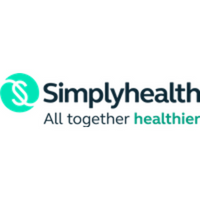Top ways to signpost and help employees make the most of mental wellbeing benefits

Regular internal communications
Just under two-thirds of organisations provide induction materials on rewards for new starters, but far fewer provide ongoing communications regarding rewards and benefits, reveals the CIPD/Simplyhealth Health and Wellbeing at Work Report (2021). Regular, well-timed communications are essential to reinforce the messaging about the benefits available. You can also link directly to external mental health support services, allowing quick and confidential access.
These methods don’t need to be complicated, time consuming or expensive. Regular emails can reach your whole workforce and they can refer to the information at any time. Notices on bulletin boards within offices can offer gentle reminders, and many benefits providers will offer support in creating marketing materials. Managers can also highlight benefit offerings, or external services, so providing regular updates and training will enable them to engage directly with employees to signpost to relevant services.
Dedicated content
Other communication methods can be overlooked by employees, so creating a specific event, such as a wellbeing webinar or themed communications, can bring these issues into focus.
There are many national wellbeing themes highlighted throughout the year, with a number of these focussing on mental health and creating an open, supportive culture at work. Aligning communications with these wellbeing campaigns can increase their impact. This enables you to provide timely and relevant content, while offering the opportunity to direct employees to resources. For example, Mental Health Awareness Week provides a great opportunity to discuss mental wellbeing, promote an open and supportive culture, and signpost to various resources.
Surveys are a great way to understand the challenges your employees are facing. You gain insights into what matters most and sense what you’re doing well. Employee assistance programmes (EAPs), which often include counselling or advice services, also offer anonymous data to highlight the issues employees have been discussing. This will give guidance on specific themes or topics that are most relevant to your business and allow you to create signposts to the services employees need.
Manager tools and training
Managers are an essential part of an effective wellbeing strategy. They are often the first point of contact relating to employee issues and they can provide links to available resources or services. Ensuring they receive regular training in areas such as having difficult conversations or the benefits currently offered by the business, will allow them to provide support and signpost to relevant help.
While support doesn’t need to come directly from the manager, they may guide employees to an internal health champion or wellbeing manager, a GP service, health benefits like a health plan, or an EAP. Ensuring managers are kept up to date with what tools are available within your organisation and how to access them will always prove invaluable.
A final word
Effective communication of benefits is an essential part of any robust wellbeing strategy, but helping employees find the mental health support they need doesn’t have to be costly or complicated. By regularly reviewing employees’ needs, and using the tools available, your business can help your them find the help they need – when they need it.
Stay informed with the latest in health and wellbeing
You can keep up-to-date with the world of health and wellbeing in the workplace by visiting our Insights Hub; designed to inform and inspire all organisations. Explore a wide range of resources such as research and how-to-guides, and hear from industry experts and partners.
This article is provided by Simplyhealth.
Supplied by REBA Associate Member, Simplyhealth
Our health plans make it easy for people to maintain their health&wellbeing.







